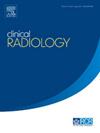Clinical outcomes, toxic effect, and immune microenvironment changes of drug-eluting bead bronchial arterial chemoembolisation/bronchial arterial chemoembolization combined with immunotherapy in treating elderly patients with non–small cell lung cancer
IF 2.1
3区 医学
Q2 RADIOLOGY, NUCLEAR MEDICINE & MEDICAL IMAGING
引用次数: 0
Abstract
AIM
Systemic chemotherapy plus immune checkpoint inhibitors (ICIs) are first-line treatment for advanced non–small cell lung cancer (NSCLC). However, elderly patients typically have comorbidities that tend to limit the use of chemotherapy at standard dosage and frequency. Drug-eluting bead bronchial arterial chemoembolisation (DEB-BACE)/bronchial arterial chemoembolization (BACE) represents options in such patients.
MATERIALS AND METHODS
This is a retrospective analysis. We screened all elderly patients (aged ≥70 years) undergoing treatment with immunotherapy plus DEB-BACE/BACE for pathologically confirmed stage III-IV NSCLC with negative driver gene mutations from October 2019 to December 2023 at our hospital. The response was evaluated according to the Response Evaluation Criteria in Solid Tumors version 1.1 criteria.
RESULTS
The final analysis included 46 patients (median age: 76 years; 42 men and 4 women). Eastern Cooperative Oncology Group (ECOG) performance status was either 1 or 2. The median progression-free survival and overall survival were 9.1 months (95% confidence interval [CI]: 8.4-9.9) and 18.2 months (95% CI: 16.5-19.9), respectively, after a median follow-up of 20.3 months (95% CI: 19.5-21.1) in all populations. The most prevalent adverse events (AEs) were myelosuppression (76.1%, 35/46), followed by decreased appetite (71.7%, 33/46), nausea (65.2%, 30/46), and fatigue (54.3%, 25/46). The rate of any grade and grade ≥3 immune-related AEs was 34.8% (16/46) and 6.5% (3/46), respectively. No patients experienced treatment-related deaths, haemoptysis, or unexpected embolisation.
CONCLUSION
DEB-BACE/BACE combined with immunotherapy was effective and well tolerated in elderly patients with advanced NSCLC.
求助全文
约1分钟内获得全文
求助全文
来源期刊

Clinical radiology
医学-核医学
CiteScore
4.70
自引率
3.80%
发文量
528
审稿时长
76 days
期刊介绍:
Clinical Radiology is published by Elsevier on behalf of The Royal College of Radiologists. Clinical Radiology is an International Journal bringing you original research, editorials and review articles on all aspects of diagnostic imaging, including:
• Computed tomography
• Magnetic resonance imaging
• Ultrasonography
• Digital radiology
• Interventional radiology
• Radiography
• Nuclear medicine
Papers on radiological protection, quality assurance, audit in radiology and matters relating to radiological training and education are also included. In addition, each issue contains correspondence, book reviews and notices of forthcoming events.
 求助内容:
求助内容: 应助结果提醒方式:
应助结果提醒方式:


